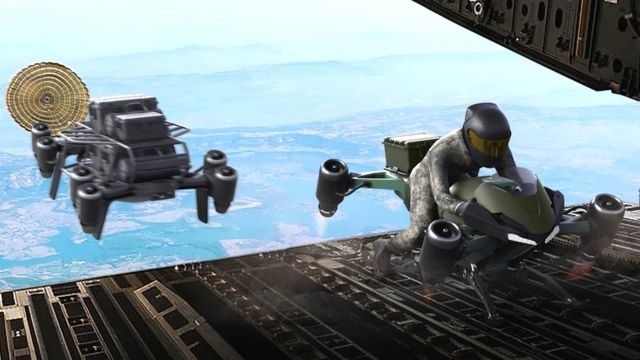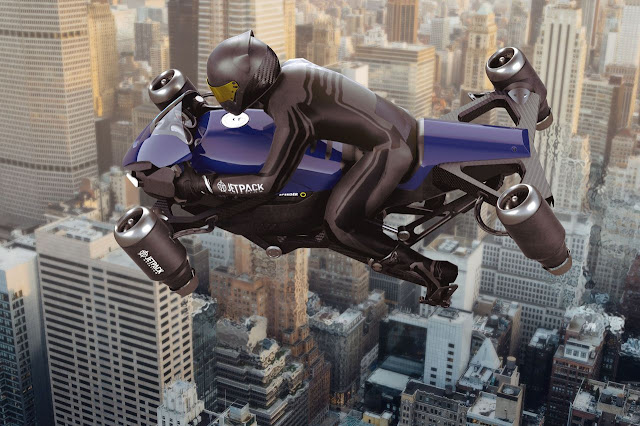During the Draper Venture Network CEO Summit in California, Mayman Aerospace unveiled a prototype of their P2 Speeder Air Utility Vehicle, which is now ready for test flights.

|
| Speeder P2 JetPack Aviation |
"We launched JetPack Aviation a decade ago, and the name has served the development of our JetPack technology well, but as we look to the future, we needed a brand that clearly defines our professional, as opposed to consumer, P2 Speeder product and markets"
explained David Mayman, CEO and founder of JetPack Aviation.
Mayman Aerospace is a subsidiary of Jetpack Aviation Corporation dedicated to the research and development of micro VTOL P2 speeders. It's capable of flying by itself or with a remote controller.
Using eight jet engines for propulsion
Hundreds of EVTOL (electric vertical take-off and landing) aircraft are in the works at the moment, but the P2 Speeder stands out because it is powered by eight jet engines that use regular zero-net-carbon or sustainable aviation fuel (SAF).
The carbon fiber aircraft is about the size of a motorcycle and features an aerodynamically optimized cockpit with an ergonomic pilot seat.

|
| Speeder P2 JetPack Aviation in Military Concept |
The modular design of the aircraft makes it possible to fly it unmanned or with a remote pilot. Both configurations would increase the P2 Speeder's utility beyond its original design for use as a small VTOL personal aircraft in SAR, policing, and military operations.
Designed and modelled to carry 1000 lb (450 kg) and fly 400 miles (640 km) at
over 500 mph (800 km/h) in unpiloted cargo mode, the P2 Speeder is a
cutting-edge VTOL aircraft that can also serve as an industrial cargo
transport.

|
| Speeder P2 JetPack Aviation in Military Concept |
Turbine engines are "the only way with current technology" to meet requirements such as "carrying a certain payload," "having a certain range," and "traveling at a certain speed," as Mayman explained to the BBC in March.
You may like these posts
In the event that P2 Speeder loses control of the angle of its jet turbines, its on-board electronic flight control system will immediately rebalance engine thrust.

|
| Speeder P2 JetPack Aviation |
Mayman put it this way: "It's effectively AI (artificial intelligence), if you want to call it that," which predicts the vehicle's needs and instructs the engines to rev up or cool down accordingly.
He went on to say that Mayman Aerospace was "pushing the outer limits of VTOL flight and that the company planned to continue incorporating new technologies such as hydrogen-powered turbine engines, electric fanjets, turbofan propulsion, complex "sense and avoid" sensors for autonomous swarming, and possibly even supersonic flight.
The aircraft is currently being certified by the FAA with the help of
Mayman Aerospace. Additionally, the firm is in advanced stages of
discussion with potential customers from a wide range of industries.
Test flights with a pilot aboard the P2 Speeder are planned for later this
year. The unpiloted flights are expected to begin in the third quarter. We
eagerly await the first flight of this unconventional plane.


Great news